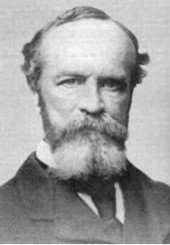 Ernst & Young’s new report on the future of private equity operations within the alternatives world focuses on the changing role of two figures: the COO and the CFO.
Ernst & Young’s new report on the future of private equity operations within the alternatives world focuses on the changing role of two figures: the COO and the CFO.
The report is lavishly illustrated with photographs of mountain climbers in various challenging positions. My fellow admirers of the philosopher William James will perhaps be reminded by these photos, and perhaps by the text of the report as well, of something James wrote about the “will to believe” in such circumstances. If, before a dangerous crevasse on the slope of a mountain, you doubt your own ability to make the necessary leap, you will hesitate in the face of the chasm so long that you will jump at last only in exhausted desperation, and then you will “roll in the abyss,” justifying the doubt. Confidence, on the other hand, can have a happier sort of self-validation.
Private equity firms are “now more poised than ever to capitalize” on the opportunities generated by the global financial crises of recent years and the shake-up it has created everywhere. Accordingly, many PE firms have accelerated their growth plans, expanded their range of investment strategies. For example, “as part of an overall trend of seeking longer-term investor capital, some firms [have] established separately managed account platforms for their most significant investors.”
They have widened their geographical scope as well, so that firms with a U.S. focus formerly, for example, have of late sought out assets in Brazil, China, and the Middle East.
All of this has created a demand for a more robust infrastructure for these operations: reporting, technology, treasury services, and other mid or back office functions all are the weight bearing beams of PE firms.
The Rise of the CFO
In terms of the domain of the CFO in particular, Ernst & Young says it has seen firms navigate through three phases:
- Installing the critical back-office functions, the same that are required “of any investment management firm,” such as fund accounting, corporate accounting, and tax accounting;
- Introducing new reporting systems to support various stakeholders. These second-phase activities include investor reporting, portfolio reporting, management reporting.
- Finally, the firm comes to use “a combination of external and internal technologists and informational technology consultants” to help manage its networks and servers to ensure that its professionals can communicate with one another and can continue providing their services without interruptions.
The role of the CFO includes guiding a growing firm through each of these phases of a sophisticated finance function. Over time, development of the PE industry will make the CFO more visible to the external stakeholders and will give him greater decision making clout internally.
The Specialists and the COO
Meanwhile, as a separate development, a firm has need of a wider range of specialists than ever before, including specialists who can’t properly be classified as either front office or back office (or even perhaps mid office). The new specialists can be described in three groups:
- In the portfolio management function professionals support the wheelers and dealers of the firm by gathering the financial data and operating metrics and performing the analyses;
- In the marketing and IR realm, specialized expertise is also increasingly significant, mediating amongst deal teams, finance, and the external service providers;
- Finally, there is compliance, a function made vastly more complicated by the Dodd-Frank Act in the U.S. and by the AIFMD in the European Union.
It’s the PE firm’s COO whose job it is to “enable these functional groups to execute on their specific objectives, while maintaining a controlled, collaborative environment with effective information-sharing.”
E&Y conclude with the observation that there will always be new mountains to climb, “the transformation of an organization’s operating model is not a process that will ever really be ‘complete.’”



